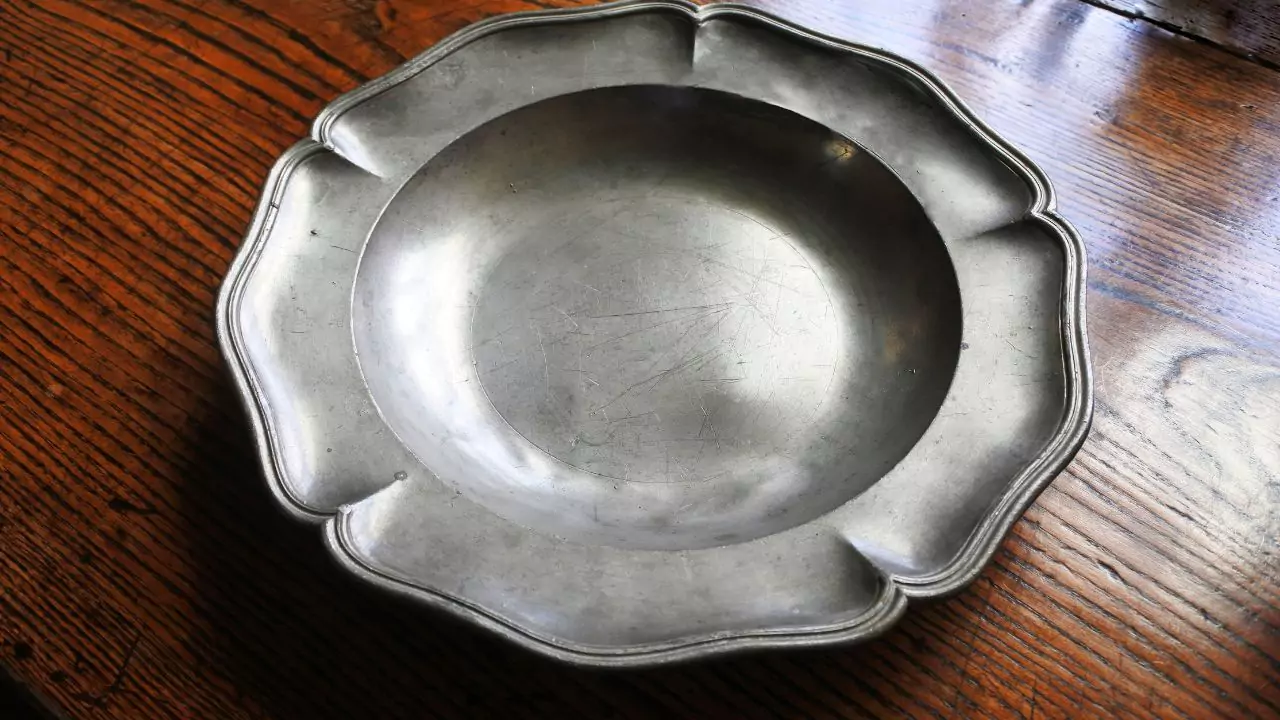Pewter is a malleable metal alloy composed primarily of tin with traces of antimony and copper. The exact mixture varies, but tin comprises 85-99% of pewter, making it the chief element. Pewter’s silvery-gray color and matte finish make it a popular choice for decorative objects, tableware, and jewelry. Its soft, pliable nature allows artisans to hand-form detailed designs yet gives pewter functional durability and corrosion resistance. The history of pewter spans centuries and continents, leaving a rich legacy of traditional craftsmanship still thriving today.
A Brief History and Overview of Pewter
Pewter’s roots trace to the Bronze Age around 3500 BCE as tin was blended with copper and antimony ores to make bronze. By the 15th century BCE, Egyptian pewter contained over 90% tin yet was less costly than bronze or silver. The Romans expanded pewter production, spreading its use throughout early Europe and Britain. In the Middle Ages, pewter was ideally suited for crafting household items due to its low melting point and malleable nature. Pewterers formed guilds to regulate quality as they met the growing demands of the public. By the 1700s, the rise of porcelain reduced pewter’s popularity temporarily until resurgences in the late 19th and 20th centuries sparked renewed collector interest. Today, fine pewter is highly valued for its artistry as well as everyday functionality and durability.
Composition and Properties of Pewter
As mentioned, the primary component of pewter is tin, accounting for 85-99% of its makeup. The tin basis gives pewter a low melting point of around 170–230°C, making it easy to cast or hand-forge into shapes. The soft, pliable metal hardens as it cools yet remains smooth enough for engraving and polishing to a bright finish.
Trace metals like copper or antimony are added to tin to strengthen pewter for functional use. Antimony lends hardness while copper improves durability. Too much copper can make pewter brittle, so 2-8% is typical. Lead was used in old pewter alloys but has been removed from modern forms. Pewter contains no nickel and won’t cause nickel allergies. This hypoallergenic quality adds appeal to jewelry and decorations.
Pewter resists tarnishing and corrosion through its high tin content. The fine microstructure and low porosity provide resistance to most everyday usage. Proper care keeps vintage pewter lustrous for generations of use.
Uses and Applications of Pewter Throughout History
Pewter’s versatility made it ideal for wide-ranging applications throughout history. In the Roman era, pewter was fashioned into household objects, weapons, toys, and votive figures. Medieval pewtersmiths crafted ecclesiastical wares, pilgrim badges, and simple functional cups, plates, and utensils for common households.
More ornately decorated pewter graced wealthier Renaissance-era tables. Scrollwork, figural reliefs, and engraving embellished fine goblets, pitchers, and dishes. Porringers with two handles were favored for serving puddings and porridge. From the 17th-19th centuries, pewter was also popular for candlesticks, teapots, trays, bowls, and platters as well as buttons, buckles, and decorative boxes.
Pewter’s affordability compared to silver made it a staple of colonial American life. Its malleable quality allowed casting into detailed molds. Britannia pewter with 96% tin-strengthened wares. Today, pewter continues shining in contemporary tabletop goods, jewelry, and statuary.
Modern Applications and Artistic Uses of Pewter
Beyond its enduring presence in tabletop accessories, pewter remains relevant in contemporary products and artistry. Architectural details like door handles, knockers, and lighting fixtures highlight the pewter’s elegance in homes and buildings. Smooth pewter bowls, vases, trays, and decorative objects populate modern interiors with classic style.
Pewter’s aesthetic qualities attract art collectors. Sculptors like Henry Koehler and Una Stubbs elevate pewter as their artistic medium of choice. Some create limited edition pewters using techniques like lost wax casting. Decorative pewter figurines and miniatures also flourish as collector’s items. From classic tankards to contemporary pendants, pewter’s unique patina and sheen elevate its use in jewelry-making for all ages.
Collecting and Caring for Pewter Items
For enthusiasts who appreciate its heritage, pewter is a rewarding hobby to collect. Marks like touchmarks and hallmarks identifying pewtersmiths aid collectors in appraising age, origin, and value. Patina and signs of hand-crafting increase vintage appeal. Rarity factors into the price for some exclusive antique pieces.
Proper care preserves pewter for ongoing enjoyment. Gentle hand washing is safest. Avoid abrasive scrubbing that can scratch the soft metal. Mild soap and water work best. Coatings like wax or lacquer will protect highly ornate pewter surfaces from tarnishing during storage. Storing in cool, dry conditions slows oxidation. With sensitive care, collectors can hand down their pewter treasures over generations.
The Future of Pewter as a Material
What does the future hold for this historic metal alloy? Pewter continues gaining interest from eco-conscious designers and consumers. Its durability outperforms plastics and sustainability exceeds disposable materials. Made from abundant natural elements like tin, pewter is inherently recyclable and non-toxic. Modern pewtersmiths also experiment with adding copper and antimony to improve hardness and functionality.
New finishing techniques add further appeal. Matte textures camouflage small scratches. Distressed patinas mimic antique aging. Combining pewter with other materials like wood, stone, or glass creates striking hybrid designs aligned with contemporary interiors. While respecting its traditional roots, pewter flexes its versatility to meet evolving aesthetics.
Conclusion
From ancient civilizations to the present day, pewter continues offering exceptional beauty, affordability, and functionality few materials can match. The natural patina and soft sheen of aged pewter impart a timeless charm. Pewter harmonizes functionality with elegance, spanning daily tasks to artistic statements. As consumers and artists increasingly value sustainability, pewter excels as an eco-friendly metal. With care and appreciation, pewter’s future seems as bright as its lustrous surfaces that have graced our lives for millennia.
At just under 1500 words, this article provides a concise yet comprehensive overview of pewter. From its composition to history and modern uses, the article explores how pewter has earned a cherished place in our homes, arts, and industries since ancient times. With versatility enduring into the future, pewter remains a material to treasure.



